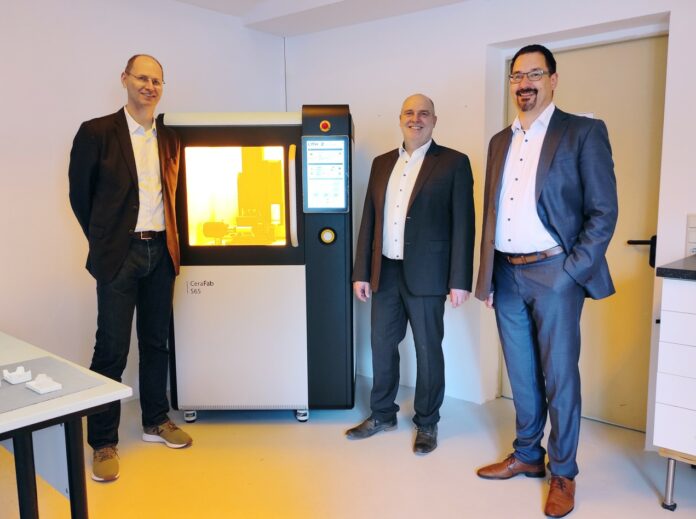Lithoz’ ceramic 3D printing technology will be utilized as part of the “Redox3D” project that aims to produce green hydrogen in solar tower power plants through thermochemical processes.
The Rheinbach (GER)-based company will harness the Lithography-based Ceramic Manufacturing (LCM) technology for the fabrication of cerium oxide components with highly complex lattice structures. The ultimate goal here will be to achieve hydrogen entirely independently from fossil energy sources.
In a recent dossier, we learned what this renewable energy transition with Additive Manufacturing (AM) looks like. At the time, ceramic 3D printing had not been mentioned as a technology that may play a role in this vertical industry. In this case, the use of LCM is maybe used at the research level, but it’s an example that is worth sharing as lessons learned throughout the project might serve other applications related to hydrogen.
The developer of the Lithography-based Ceramic Manufacturing technology explains that with a 3D-printed ceramic material as key enabler and sunlight as the primary energy source, this solar-thermochemical process would be one of the key solutions in making zero emission societies a reality.
WZR, who has been working with ceramic 3D printing since 2004, is part of the “Redox3D” project, where they will partner with the DLR (German Aerospace Center) to determine the ideal lattice structure for the optimum solar heat penetration into cerium oxide components. For this important mission, which has received public funding by the German Federal Ministry for Economics and Climate Action (03EE5124A), WZR identified Lithoz’s ceramic 3D printing system as a potential key technology to develop the solution, with the CeraFab S65 being their first own printer using DLP technology, a press release reads.
Dr. Johannes Homa, Lithoz CEO, shared his excitement at being part of ‘such important research, especially because we consider hydrogen generated with renewable energy the number one solution to save our planet from further climate change. Lithoz is committed to supporting such projects using the industrial standard of LCM technology to make zero emission societies a reality.”
The project will span over a 3 year-period and will have two main phases:
- The first phase will test and optimize different 3D printing techniques to precisely control and process the cerium oxide ceramic material, with the key technology then being selected.
- In the second phase, the optimal structures will be designed, supported by calculations of project partner DLR, and then applied to complete the project. The filigree structure produced must be extremely complex to enable the deepest possible penetration of solar energy into the cerium oxide component, which is crucial to achieving the highest efficiency in the energy generation process.
Thanks to the level of complexity and accuracy achievable via LCM, the high level of intricacy required in the structures can be produced, allowing solar energy to penetrate deeper into the parts and thus enabling a more efficient energy extraction process. The exact reproducibility of these parts is also crucial to the success of the project and is made possible with the LCM technique, one learns.
‘Using Lithoz’s powerful 3D printing technology and their proactive partnership approach, we are confident that we will achieve the levels of complexity and intricacy in filigree structures needed to achieve our goals in this project,’ explained Dr. Dieter Nikolay, Managing Partner WZR. ‘Thanks to the speed and high-quality surface finish of this technique, we will once again be able to further drive innovation forward, this time with the production of green hydrogen.’
Remember, you can post free of charge job opportunities in the AM Industry on 3D ADEPT Media or look for a job via our job board. Make sure to follow us on our social networks and subscribe to our weekly newsletter : Facebook, Twitter, LinkedIn & Instagram ! If you want to be featured in the next issue of our digital magazine or if you hear a story that needs to be heard, make sure to send it to contact@3dadept.com






